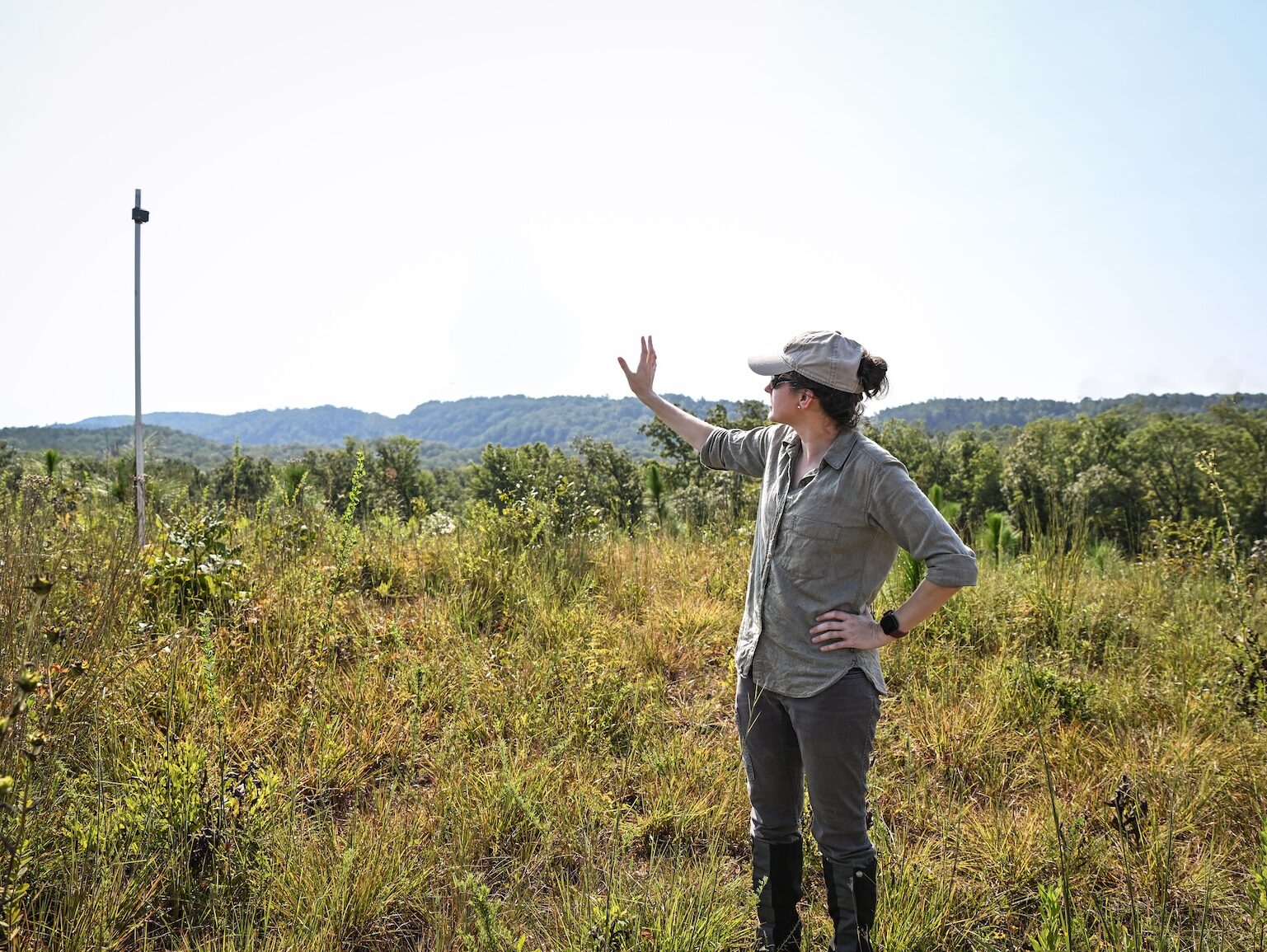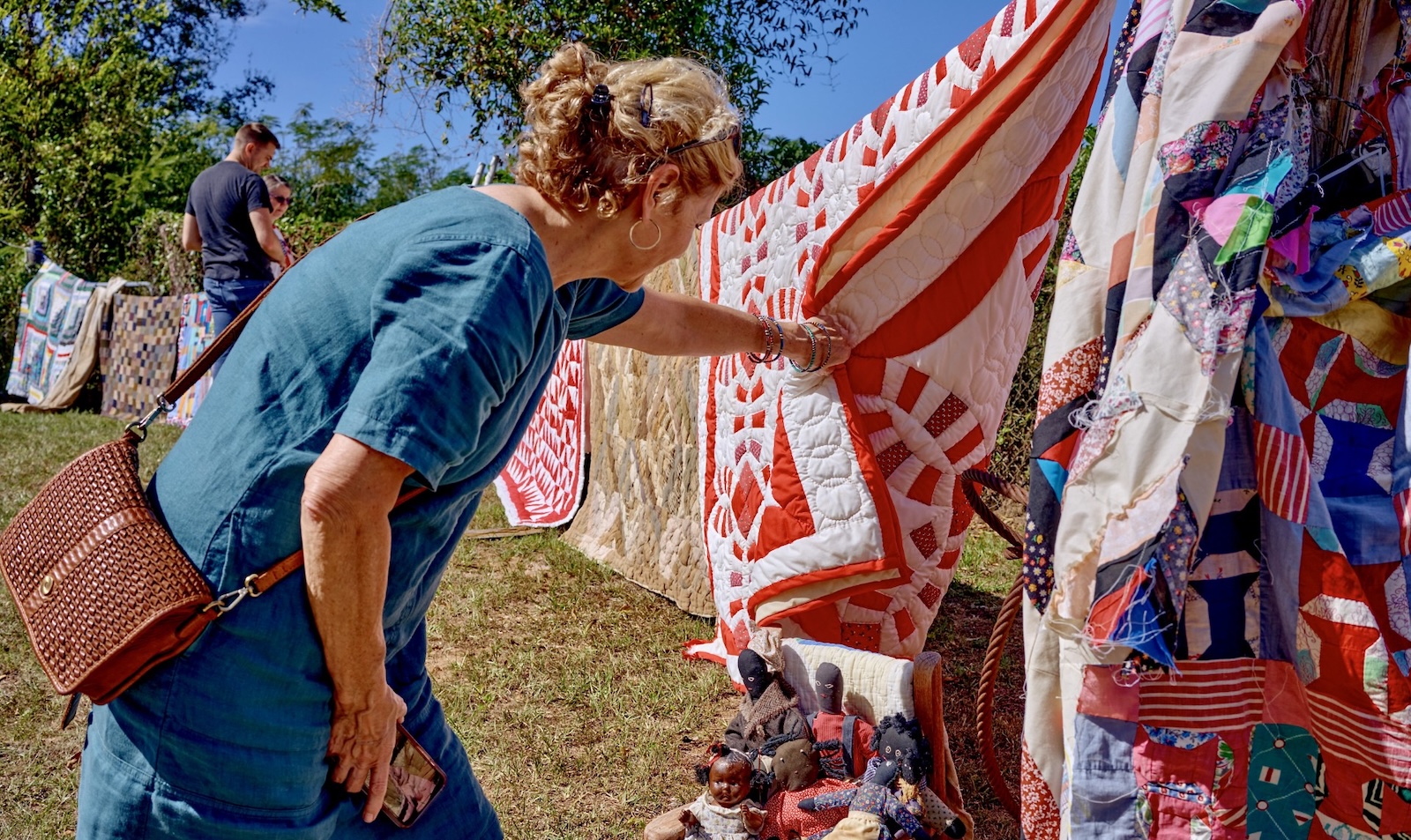Sharon Valverde has researched moose in Alaska, elk in New Mexico, and mule deer in Texas. However, nothing in her extensive experience in deer ecology and management prepared the University of West Alabama assistant professor and researcher to dip her toes into the study of bats.
Before focusing on bats, Valverde set up 26 game cameras and for over a year studied a variety of mammals—from long-tailed weasels to larger species—that inhabit the University’s Cahaba Biodiversity Center (CBC) in Bibb County, Alabama. She aimed to capture a comprehensive data set of all mammal species within the CBC landscape. Yet, she found that traditional game cameras were ineffective for detecting flying mammals and distinguishing between small mammal species.
To fill in this knowledge gap, a grant from the Alabama Association of Resource Conservation and Development Councils (Alabama RC&D) provided Valverde with the necessary funding to purchase five bat detectors and essential supplies for monitoring small mammals. Joining her in this research is Taylor Underwood, a graduate assistant in the Master of Science in Conservation Biology program.
Underwood’s collaboration with Valverde began unexpectedly at the Association of Southeastern Biologists Conference (ASB). At the conference, Underwood, then an undergraduate at the University of Tennessee at Martin, presented her research on vertical layering in forests using traditional game cameras to examine community composition at various heights. There she met Dr. John McCall, professor emeritus of biology and retired dean of UWA’s College of Natural Sciences and Mathematics, who encouraged her to connect with Valverde about graduate opportunities. Now in her third semester at UWA, Underwood finds studying bats and small mammals both challenging and exciting, and she describes Valverde as “a wonderful mentor.”
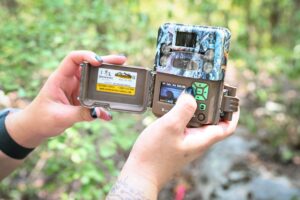
(Cody Ingram/Contributed)
Bat Detectors
Bats use echolocation to hunt insects, emitting sound pulses that bounce off their flying prey to gauge distance and position and adjust their flight paths accordingly. Unlike game cameras, which are triggered by movement, bat detectors are acoustic monitors that capture the high-frequency clicks and squeaks bats use for navigation. The bat detectors purchased through the Alabama RC&D grant were strategically placed in corridors, near water sources, areas with high insect activity, and open spaces conducive to bat flight and detection around the CBC. Installed in March 2024, these detectors record each species’ distinctive pinging patterns while searching for food.
Since bat sounds occur at frequencies undetectable to the human ear, Underwood uses Kaleidoscope, a specialized bat call software to analyze the data collected monthly. Wildlife Acoustics, the provider of both the bat detectors and the software, has also offered multiple online training classes that Underwood has completed to better understand the software. Preliminary data retrieved from the detectors suggests that at least nine bat species may inhabit the CBC property, with further analysis planned over the next year.
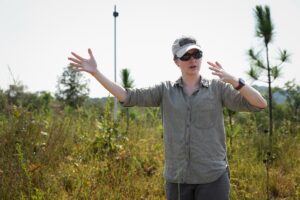
(Cody Ingram/Contributed)
Small mammal research with the Mostela box
In addition to bat research, Valverde and Underwood are studying small mammals using the Mostela box, a new surveying technique introduced in the field in 2020. Measuring approximately two feet at its widest dimensions, this box features a section of four-inch PVC pipe with a small window cut into it. A game camera records five seconds of footage when a small mammal enters the box through the pipe.
With grant funds from Alabama RC&D, Underwood built 15 modified Mostela boxes, placing 13 of them in the field. The innovative 2020 method also improves camera footage detail by modifying the focal length of the game cameras with the addition of a reading glass lens. This lens, combined with a ruler in the video frame, enables clear images and accurate measurements of each animal, allowing for the identification of very small animals using cameras typically designed for much larger creatures. Traditional small mammal research often involves live captures, which can result in high mortality rates due to the stress of capture. In contrast, the Mostela box allows researchers to gather data through non-invasive sampling without directly interacting with the animals. “Now, they can wander into the box, snack on the sunflower seeds, and provide valuable data without risking them,” Underwood explained.
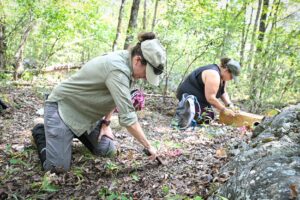
(Cody Ingram/Contributed)
In addition to being one of the first in Alabama to utilize the Mostela boxes, Underwood is also testing a brand-new modification to the system. She has installed 3-meter drift fences made of landscape fabric on either side of the boxes to guide small mammals into them, thereby broadening the surveying area for the boxes. To assess the effectiveness of these fences, she alternates their presence: leaving them in place for 60 days and then removing them for 60 days. This approach helps determine whether the fences attract or deter animals.
Valverde and Underwood recently presented their Mostela box research to an enthusiastic audience at the Alabama Chapter of the Wildlife Society. “Their positive response confirmed we were on the right track,” Underwood said. Valverde echoed this sentiment, noting, “Sharing our findings with this group could also lead to valuable suggestions for further modifications we didn’t think of.”
Since joining UWA in late 2021, Valverde continues to be impressed by the CBC’s role as an outstanding outdoor classroom that provides valuable hands-on experiences for undergraduate and graduate students. “This small university has wonderful resource in the CBC that aligns perfectly with my skills and training while supporting my research. It is an absolute gem!”
